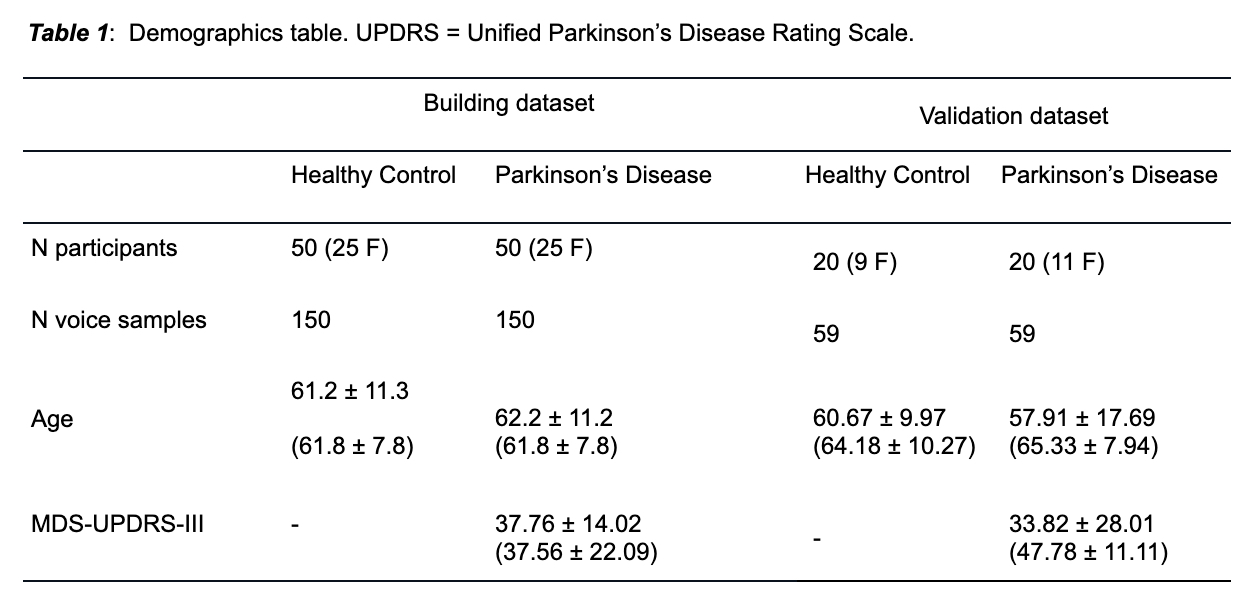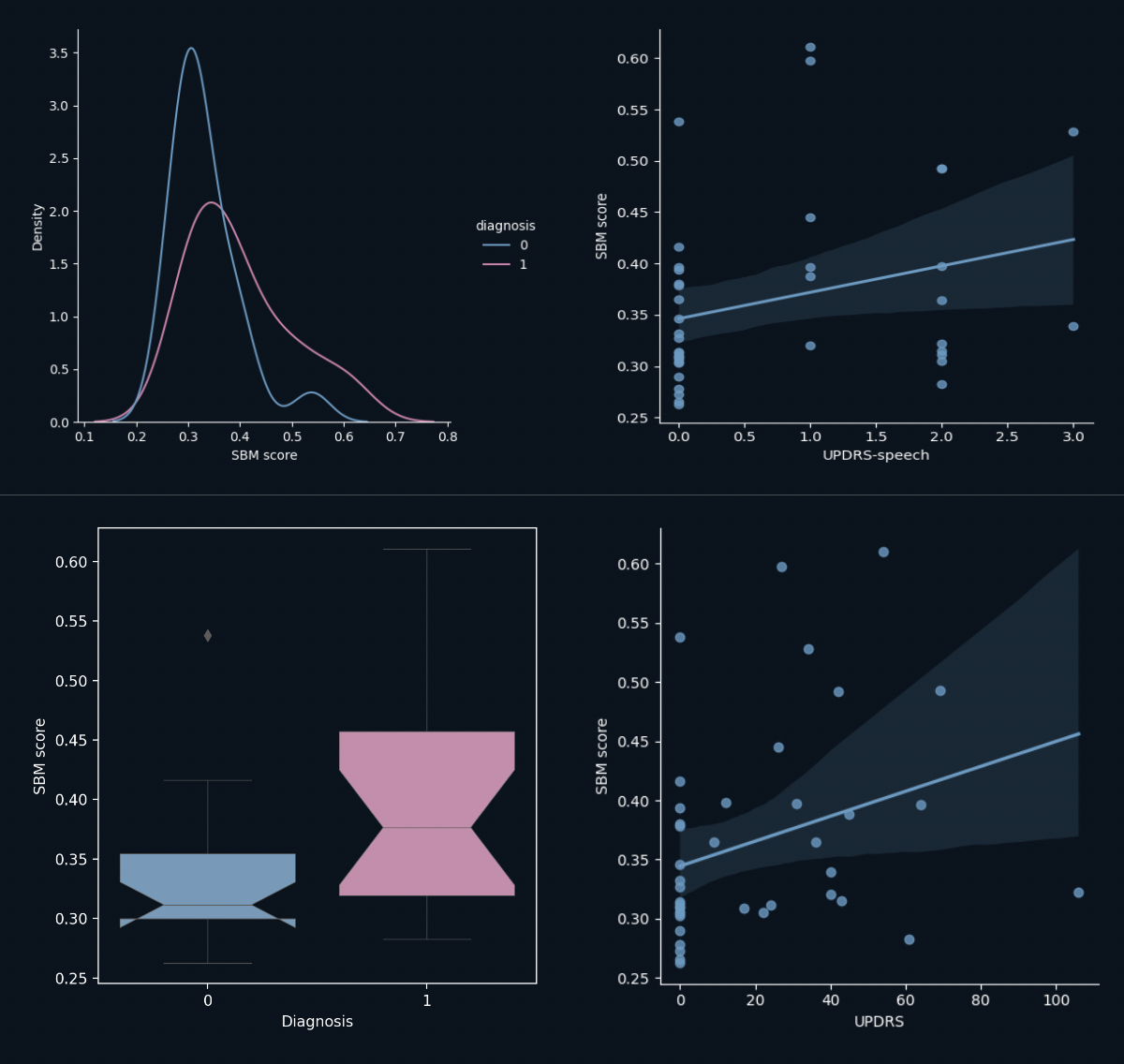Category: Technology
Objective: The aim of this work was to evaluate the feasibility of a speech-based algorithm geared towards frequent remote measuring of Parkinson’s disease severity with minimal patient burden and minimal technical requirements.
Background: Monitoring of disease progression and treatment response at low-burden and low-cost is a recognised target in clinical research on Parkinson’s disease (PD). Thanks to the progress of speech technology, speech is among the most promising digital biomarkers as it can be collected with low patient burden over natural speech interactions. Besides, it enables remote evaluations with minimal tech requirements at a low cost.
Method: The speech biomarker was developed and validated using audio recordings of a sustained phonation task from the PC-GITA data set ((1), see Table 1). Clinicians assessed patients with the third section of the Movement Disorders Society – Unified Parkinson’s Disease Rating Scale (MDS-UPDRS-III). Both, patients and age-/ sex-matched healthy controls (t-test with p=0.77 and chi-square test with p=0.99, respectively) recorded a comprehensive speech tasks protocol including sustained phonation tasks with five different vowels. To build the shortest viable algorithm possible, we focused on the recordings from the one and most commonly used sustained phonation task (vowel /a/), which was repeated three times in succession by each participant.
From the recordings, we extracted acoustic features using the ki:elements speech extraction library SIGMA and selected features based on face validity as well as other descriptive statistics. Features are then aggregated across all three assessments, normalized and combined into a single score (speech-based motor biomarker).
Results: Results are based on the hold-out validation data set. Our speech biomarker significantly correlated with MDS-UPDRS-speech item 3.1 (Spearman-Rank, r = 0.33, p < 0.05, Cohen’s d = 0.72). We also found a significant group difference between PD and healthy controls (Kruskal Wallis, x2 (1) = 6.74; p < 0.01, Cohen’s d = 0.84) as well as a significant correlation with the MDS-UPDRS-III score (Spearman-Rank, r = 0.41, p < 0.05, Cohen’s d: 0.89). Compare also Figure 1.
Conclusion: Results suggest that it is feasible to measure PD severity with minimal patient burden, almost unobtrusively and remotely from only a couple of seconds of speech from a vocal phonation task.
References: (1) Orozco-Arroyave, J. R., Arias-Londoño, J. D., Vargas-Bonilla, J. F., Gonzalez-Rátiva, M. C., & Nöth, E. (2014, May). New Spanish speech corpus database for the analysis of people suffering from Parkinson’s disease. In LREC (pp. 342-347).
To cite this abstract in AMA style:
J. Tröger, L. Schwed, E. Baykara, N. Linz, J. Orozco-Arroyave. Building and evaluating a speech biomarker from 2-seconds sustained phonation to detect and monitor Parkinson’s disease [abstract]. Mov Disord. 2023; 38 (suppl 1). https://www.mdsabstracts.org/abstract/building-and-evaluating-a-speech-biomarker-from-2-seconds-sustained-phonation-to-detect-and-monitor-parkinsons-disease/. Accessed April 20, 2025.« Back to 2023 International Congress
MDS Abstracts - https://www.mdsabstracts.org/abstract/building-and-evaluating-a-speech-biomarker-from-2-seconds-sustained-phonation-to-detect-and-monitor-parkinsons-disease/


